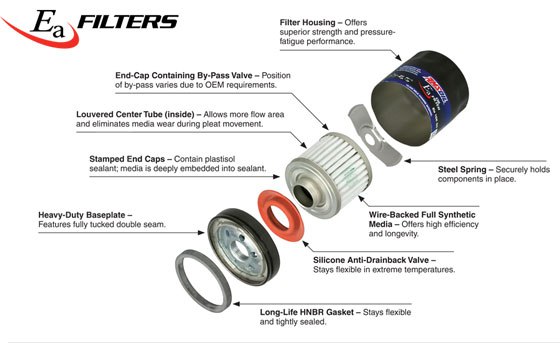Oil Filter Questions Answered – Use an Oil Filter Twice? John Baker|Jun 14, 2019 2:00 PM In theory, your filter has a simple job: capture wear-causing contaminants and hold them in the filter media so they don’t run amok inside your engine. But lots of factors can throw a wrench into this plan, which can […]
You are browsing archives for
Tag: Ea oil filter
Latest Synthetic Oil Filter material vs ...
Synthetic Oil Filters vs Regular (Cellulous) Oil Filters Ed Newman | Jul 26, 2017 8:51 AM Early automobile engines didn’t use oil filters, or air filters for that matter. For this reason frequent oil changes were a must. Motor oil quality wasn’t really that important in those days, anyway. It was the discarded by-product of […]

